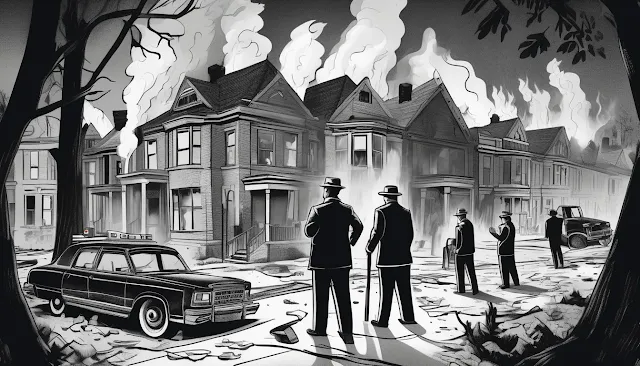A quite summer morning in 1951 woke up the residents of St. Petersburg, Florida, to a bizarre and horrifying mystery-one that would plague the city for many months thereafter. Inside her modest apartment, 67-year-old Mary Reeser was found burned to death in a way that defied all sorts of explanation. Her body was almost totally reduced to ash, while the surrounding room barely received any sign of fire. The bizarre and ghastly circumstances of her death sparked a national debate over the supposed possibility of spontaneous human combustion. A phenomenon in which it is said that a person catches fire without any external cause prompted the suspicion that such could be the case with Mary Reeser. Or was there a more earthly explanation to this shocking death? Let's delve into the eerie details of this perplexing case that has haunted investigators for decades.
The Discovery: A Grim Scene in St. Petersburg
On July 2, 1951, Pansy Carpenter, the landlady of Mary Reeser, attempted to deliver the telegram to her apartment. The door handle was too hot for her to open the door without probable damage to herself; hence, she called officers who responded and entered the room; they found the body of Mary Reeser, almost totally incinerated, except for her left foot. Beside it, chair on which she had been sitting had caught fire only partially. Except for burning chair, hardly any place in this room was damaged by fire. Walls and ceiling are greasy stained but objects like a pile of newspaper were intact.
This is not a typical house fire. There was no logical explanation to why a fire hot enough to incinerate a human body didn't scorch anything in the room, much less its contents.
Theories: Spontaneous Human Combustion or an Unexplained Accident?
Due to the suspicious circumstances surrounding her death, people were quick to suggest the existence of spontaneous human combustion (SHC) in Mary Reeser's case. This condition is both rare and contentious, as it suggests that a human body can be set aflame without an unpunctured. Proponents of SHC highlighted the copper-red horse ash and the fact that such temperatures could not have been achieved without embers, and this was shown by the reasonable level of disruption across the rest of the room.
However, investigators considered more grounded explanations as well:
The "Wick Effect":
One of them was Michael Shermer, who is best known for being the founder of the Skeptic Society. He proposed that during the summertime, a fire needs only a bit of fat, which gets cold beneath the ground, in combination with the wicking effect, which states that in these situations, the flesh continues to burn slowly like to a candle. A smoldering ember contained this fire, which consumed nearly all of Reeser's body. The ember would explain her body incineration but almost none of the other parts of the room were truly broken.External Ignition:
Mary Reeser was a chronic smoker and some of her roommates claimed to have seen her fall asleep with a cigarette burning in her hands. It has been noted by a few investigators that she might have left a lit cigarette on a chair which started a slow burning process.Paranormal and Unexplained Forces:
Although there are many more believable explanations for this incident, some theorists still believed that Mary Reeser actually suffered from spontaneous human combustion. To this date, the theory on SHC is still up for debate, and skeptics argue that external factors must interfere, while others cite similar cases as evidence of such a rare happening.
The Aftermath: Scientific Investigations and Unanswered Questions
They called the FBI to aid in reconstructing the puzzle; they analyzed the ashes of Mary Reeser and ran experiments concerning a possible chemical reaction that might have sparked the fire. The investigation concluded that she must have fallen asleep smoking, and this wick action ignited it. However that did not impress the public and a complete mystery still existed about the extreme power of the fire and its slight effect on the room.
For over five decades, the case of Mary Reeser has fascinated people's imagination, many continued to wonder whether spontaneous human combustion was possible. Though actual science settled on more mundane explanations for the death, those who believe in the unexplained continue to find fascination in the eerie details.
The Legacy of Mary Reeser’s Mysterious Death
One of the most-discussed cases of spontaneous human combustion is that of Mary Reeser. Her life continues to raise passionate debate among forensic scientists, paranormal fans, and true crime show enthusiasts. Even as the official story tells us how unfortunate it was-a case of accidental death, the scene where she lived still makes a mystery at large, inspiring documentaries, books, and even artwork.
Whether the result of spontaneous human combustion or something rather more mundane in cause, the Mary Reeser case is one of the most intriguing unsolved mysteries of the 20th century.







0 Comments